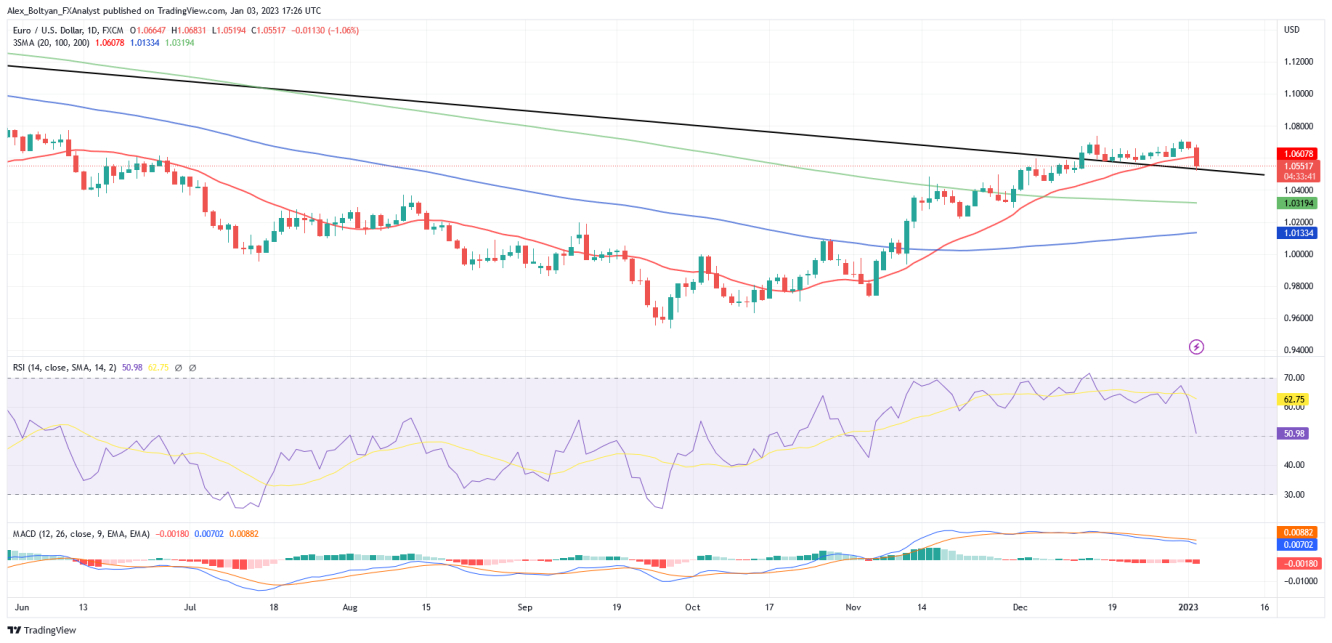The EUR/USD pair tumbled to its lowest level since December 12 on Tuesday as the U.S. dollar soared across the board despite the mildly positive market mood. Lower-than-expected German inflation figures also weighed on the shared currency.
At the time of writing, the EUR/USD pair is trading at the 1.0555 area, 1.0% below its opening price, after hitting a low of 1.0519 earlier in the session. Meanwhile, the DXY index trades at 104.60, posting a 1.1% daily gain.
Data showed the preliminary estimate for the German Harmonized Index of Consumer Prices (HICP) for December increased at an annual rate of 9.6%, significantly below the 10.7% anticipated and slowing from 11.3% in November. Other data from the U.S. confirmed that the final estimate of the December S&P Global (NYSE:SPGI) Manufacturing PMI came in at 46.2, just in line with expectations.
Ahead of crucial data from the U.S. this week, the greenback managed to stage a strong rebound despite the retreat of American bond yields. The 10-year note currently yields 3.77%, while the 2-year note offers 4.4%, declining 1.5% and flat, respectively.
From a technical view, the EUR/USD short-term outlook remains tilted to the upside, according to the daily chart. At the same time, the pullback can be considered as merely corrective as long as the EUR/USD holds above a broken descending trendline, which in fact, acted as support at the 1.0520 area. As for indicators, the RSI fell to its lowest level since November but holds above its midline, while the MACD prints higher red bars indicating that the bears are gaining traction.
On the downside, the following support level is seen at the mentioned trendline at around 1.0520, followed by the psychological mark of 1.0500 and December lows at the 1.0430 area. On the other hand, the bulls need to reclaim the 20-day SMA, currently at 1.0608, to regain momentum and advance toward 1.0700 and then potentially to December’s highs at 1.0736.


